I thought i would post some photos of my Tomatoes. Tomato plants need a sunny position and planty of water and fertilizer to grow a good crop of fruit. Here in Sydney ,we have fruit fly and the Tomatoes can have grubs inside when they are ripe, which makes eating them a bit yukky. So we have to spray them with insecticide to prevent the fruit fly. Make sure you leave 2 weeks after spraying before you eat the fruit. Homegrown Tomatoes are the best !! I put mulch around the bottom of each plant to prevent weeds from growing and to keep the water in the soil so you don't have to water them as much. Here, i have used Sugar Cane Mulch, but you can use hay or straw too.
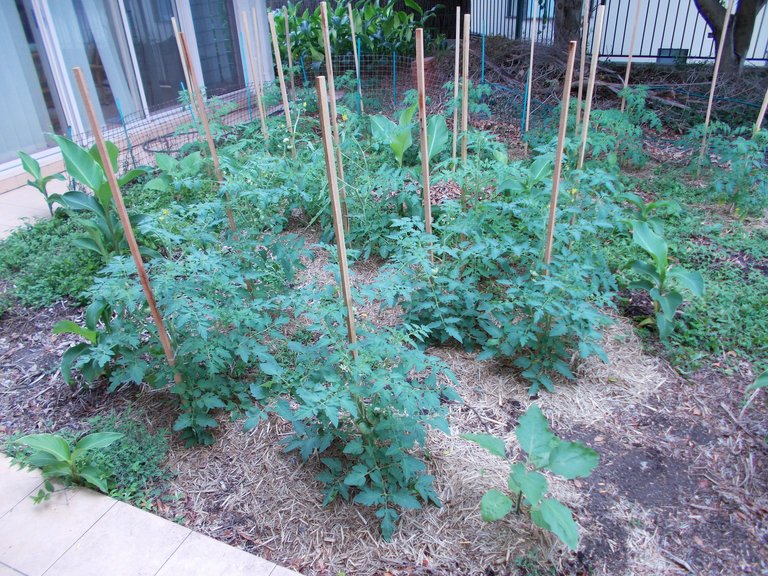
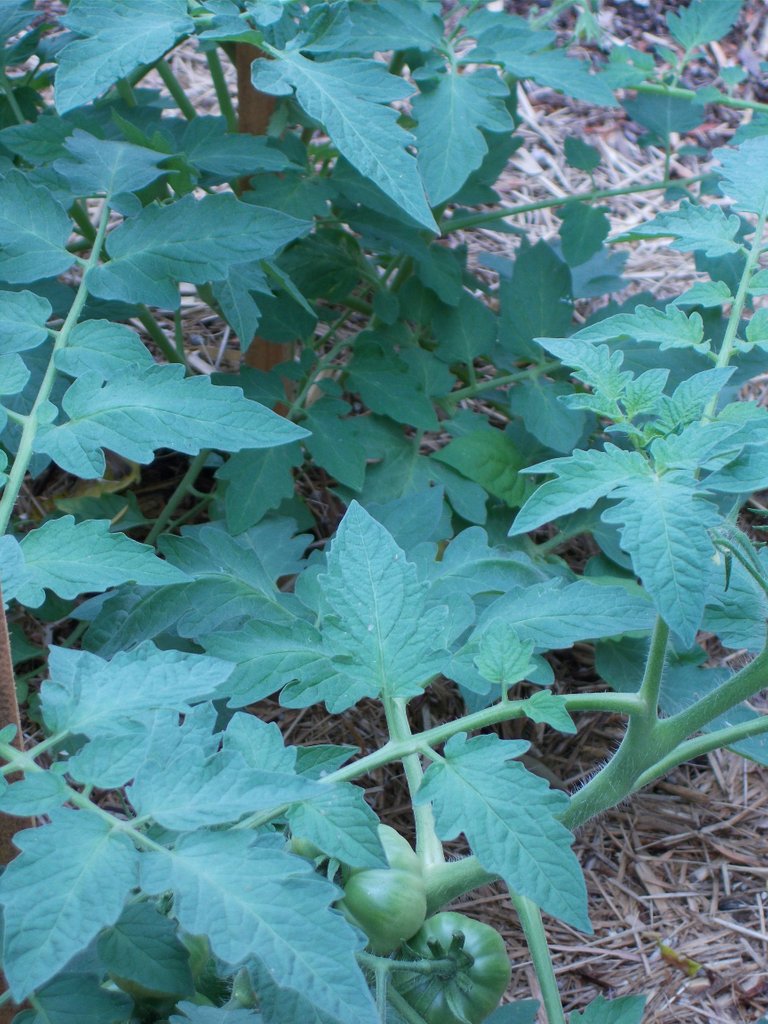
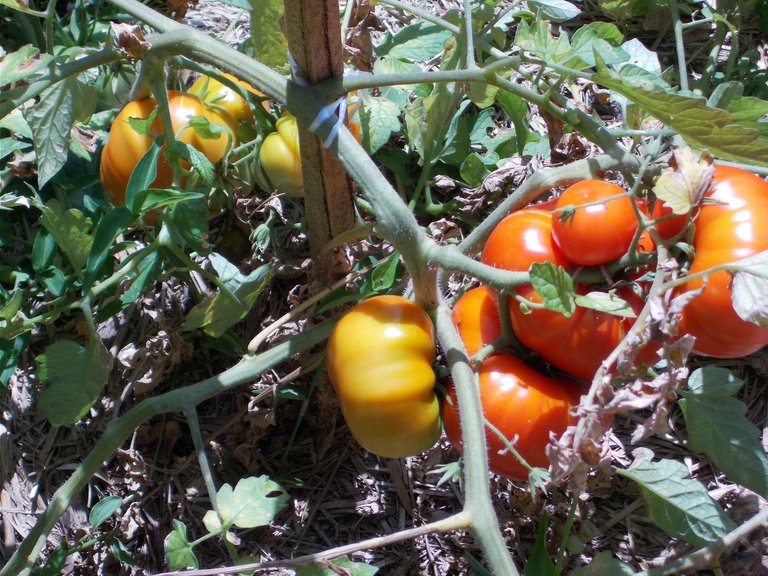
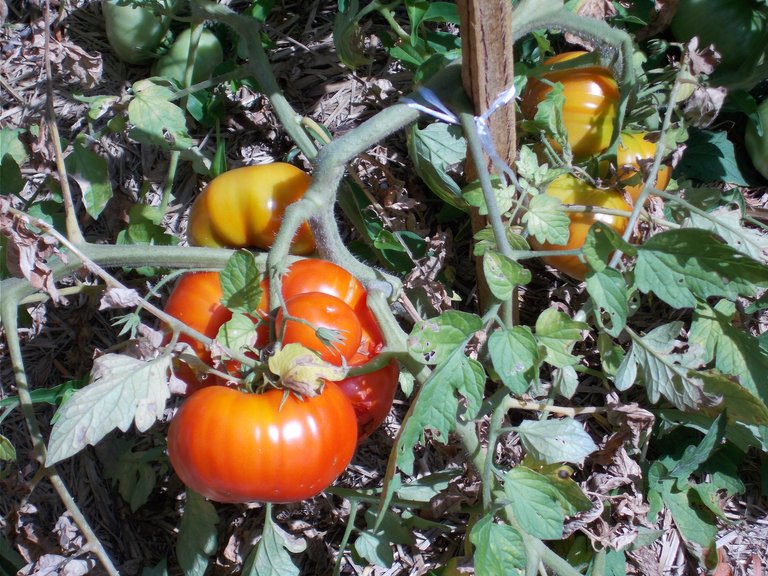
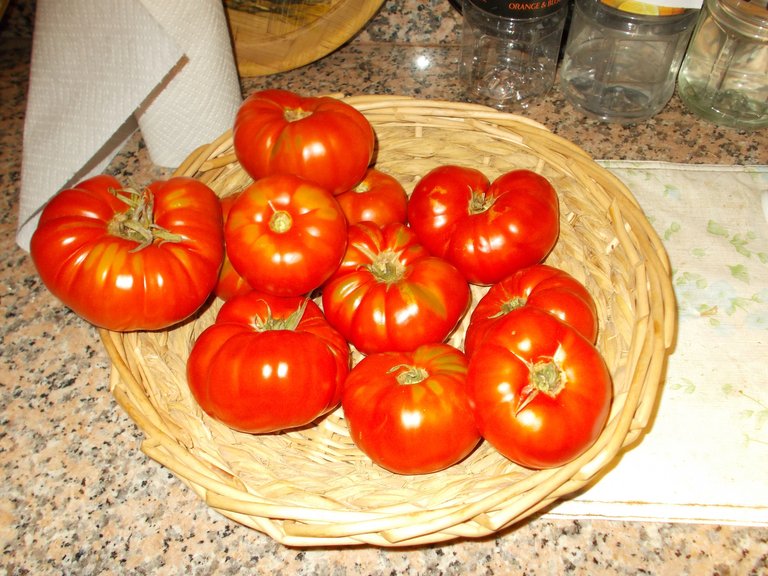
The heaviest tomatoes recorded are 3.51 kg.
Congrats, you have won the Fav. comment award. This is very interesting information and also nice pics. Well done. Next time, give your source for the info and photos/pics.
Ohh thnks a lot ! ı am sorry. ı am so new for steemit . and next time i will do !
Oh yeah, great photos and you tomatoes look healthy and with a good harvest. Mulch - this is any material that is laid on the surface of the soil, in order to regulate its air and water regime. As it can act natural components or artificially created substances.
The benefits of mulching tomatoes in the open ground or in a greenhouse are: protection of the earth's surface from drying out; Under the layer of mulch, sunlight does not penetrate, which does not allow us to grow weeds;
the layer that comes into contact with the soil begins to rot in time and feeds worms, naturally fertilizing the soil under the tomatoes.
What is useful for mulching tomatoes with straw?
It is great for filling row spacing, not just covering the open ground in beds with tomatoes. In addition to all other advantages of mulch, straw enriches the soil with organic substances.
In addition, it creates the optimum soil temperature. This is especially important when growing tomatoes in the open ground. Because the straw does not allow the soil to cool quickly after a sudden spring frost. So, the metabolism between all parts of the plant will not be disturbed, because the root system will function normally.
Another benefit of straw is that stunted plants, whose fruits fall to the ground, are protected from the effects of the earth. Tomatoes lie on the straw, which means they do not deteriorate.
http://superda4nik.ru/chto-takoe-mulchirovanie/
Hi sir @ctrl-alt-now I always wait for your post,it makes me feel good.Tomatoes is a very popular vegetable.Now a days it used in different kinds of recipe.Here is some interesting information about tomatoes.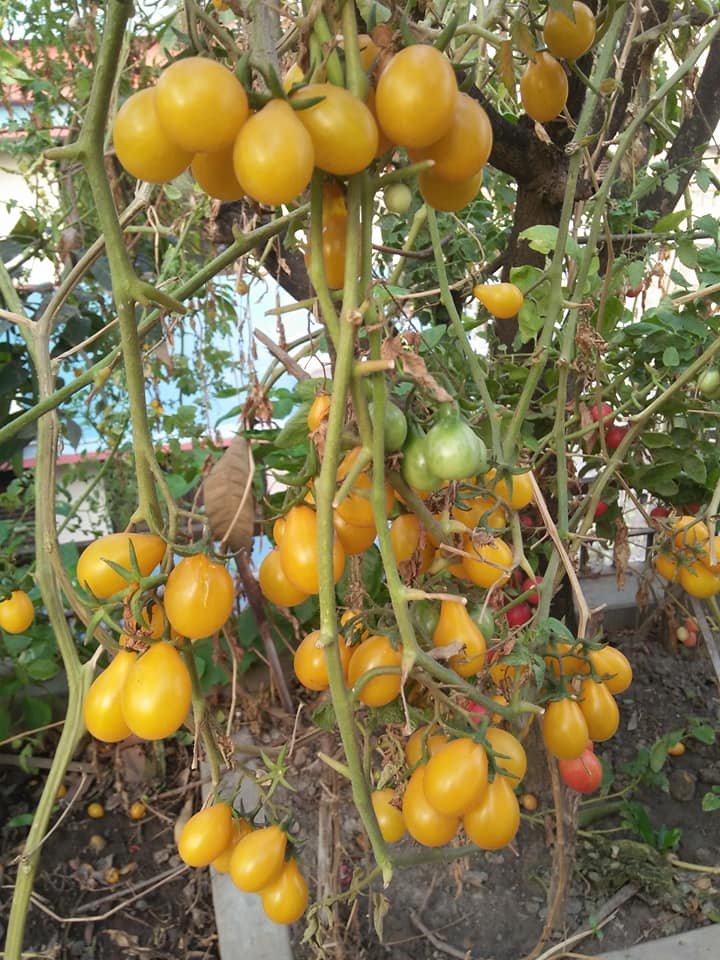
Fast facts on tomatoes:
1-Including tomatoes in the diet can help protect against cancer, maintain healthy blood pressure, and reduce blood glucose in people with diabetes.
2-Tomatoes contain key carotenoids such as lutein and lycopene. These can protect the eye against light-induced damage.
3-Eat more tomatoes by adding them to wraps or sandwiches, sauces, or salsas. Alternatively, eat them cooked or stewed, as these preparation methods can boost the availability of key nutrients.
4-Tomatoes are in the top ten fruits and vegetables for containing levels of pesticide residue. Wash tomatoes before eating.
Tomato sauce is very popular all over the world.Thanks for the post.@upvoted and resteemed
Information source google.
I agree with you @ctrl-alt-nwo sir,
Homegrown tomatoes are the best. Every year I plant a cherry tomato and have always had success in getting a bumper crop. Last year, for the first time, squirrels had been stealing lots of tomatoes as soon as they ripen. So while you can try to keep them out of your yard, it’s usually better to outsmart them. To protect your homegrown tomatoes against squirrels wrap individual plant of tomatoes in small pieces of bird netting. Squirrels seem to be most interested in stealing tomatoes just as The Big Boy tomato is a classic variety that has great flavor. This is a big, sandwich-type slicer with smooth, bright red fruit. Big Boy tomatoes are resistant to cracking.
Extra-large fruit Rich flavor 1 slice covers a sandwich Indeterminate, grows tall and produces throughout seasonCherry tomato plants produce sweet, small gems that are easy to grow, and they ripen quickly. So flavorful, it's tough to resist eating them straight from the vine. They're wonderful as a healthy fresh snack or tossed into salads.
Bright orange, red or yellow when ripe Intensely sweet flavor Heat-tolerant Indeterminate, grows tall and produces throughout season Disease resistantThank you for posting. Lovely photographs of your stroll and well written missive of your musings. So enjoyed hearing about your gardening and how you appreciate it.
Every tomato lover dreams of growing the ultimate tomato. Firm, but juicy. Sweet, but tangy. Aromatic and blemish free.
Unfortunately there are few vegetables that are prone to more problems than tomatoes. The trick to growing great tasting tomatoes is to choose the best varieties, start the plants off right, and control problems before they happen. Start here with some time tested tomato growing tips, to ensure your tomato bragging rights this year.
1.Don't Crowd Tomato Seedlings
2.Provide Lots of Light
3.Put a Fan on Your Tomato Seedlings.
4.Preheat the Soil in Your Garden
5.Bury Them
6.Mulch Later
7.Remove the Bottom Leaves.
8.Pinch and Prune for More Tomatoes
9.Water the Tomato Plants Regularly.
10.Getting Them to Set Tomatoes
Wow !! Great agricultural related post.....and great job @ctrl-alt-nwo.
I always like agricultural related post...because i love it.
I planted seedlings of peppers, eggplants and tomatoes.
We already have no snow and soon there will be a plus temperature.
Mulch is a covering placed over the soil around your tomatoes. It's key step to take in effective tomato care.
It keeps moisture in. A layer spread over bare soil allows the area to soak up more water. The outer layer dries faster than the soil below it. That reduces the rate of evaporation from the soil, plus it lets the soil to retain moisture for your tomato plants.
It regulates soil temperature. In hot summer months, a layer helps keep the underlying soil cooler. In the fall when temperatures fall off, the layer around your tomato plants keep roots warm.
It smothers weeds. Fewer weeds sprout because seeds are buried beneath the surface. And the weeds that sprout are weak and easy to pull.
It prevents disease and fruit rot. A layer keeps water from splashing on the soil, absorbing bacteria and fungi, and bouncing up onto your plants. Likewise, when a tomato falls onto a layered area, it is less likely to rot quickly than if it falls onto soil.
It improves the soil. Organic varieties can be turned into the soil at the end of the season.
source
Thanks for reading @ctrl-alt-nwo
Tomato, is today the most popular garden vegetable in America. For many years, however, tomatoes (then called "love apples") were considered poisonous and were grown solely for their ornamental value. Tomatoes are usually easy to grow and a few plants provide an adequate harvest for most families. The quality of fruit picked in the garden when fully ripe far surpasses anything available on the market, even in season. The tomato plant is a tender, warm-season perennial that is grown as an annual in summer gardens all over the continental United States. Spring and fall freezes limit the outdoor growing season.
Recommended Varieties
Hundreds of varieties of tomatoes are now available for the home gardener. They range widely in size, shape, color, plant type, disease resistance and season of maturity. Catalogs, garden centers and greenhouses offer a large selection of tomato varieties and choosing the best one or two varieties can be extremely difficult. Evaluate your needs, then choose the varieties best suited to your intended use and method of culture.
Tomato plants fall into one of two types that affect ultimate plant height and cultural requirements. Tomatoes are determinate if they eventually form a flower cluster at the terminal growing point, causing the plant to stop growing in height. Plants that never set terminal flower clusters, but only lateral ones and continue indefinitely to grow taller are called indeterminate. Older varieties are almost all indeterminate. These can be counted upon to produce abundant foliage and to ripen flavorful fruit. They may, however be extremely late in maturing. The first determinate varieties developed had real problems with inadequate foliage cover and taste, but they ripened very early. Newer determinates produce better foliage, may grow taller and ripen fruit of similar quality to modern indeterminate varieties. They still tend to ripen their fruit over a shorter period of time, so successive plantings may be desirable with determinates to keep the harvest coming through the entire season. Determinate vines are easier to control and support during the growing season. Some of the extreme dwarf types are determinate as well as dwarf, producing some truly tiny mature plants.
Days to harvest are generally determined from the time transplants are planted in the garden.
Source
Tomatoes is an exceptionally famous vegetable.Now a days it utilized as a part of various types of recipe.Here is some intriguing data about tomatoes.
Quick actualities on tomatoes:
1-Including tomatoes in the eating regimen can help secure against tumor, keep up solid pulse, and diminish blood glucose in individuals with diabetes.
2-Tomatoes contain scratch carotenoids, for example, lutein and lycopene. These can ensure the eye against light-actuated harm.
3-Eat more tomatoes by adding them to wraps or sandwiches, sauces, or salsas. Then again, eat them cooked or stewed, as these arrangement strategies can support the accessibility of key supplements.
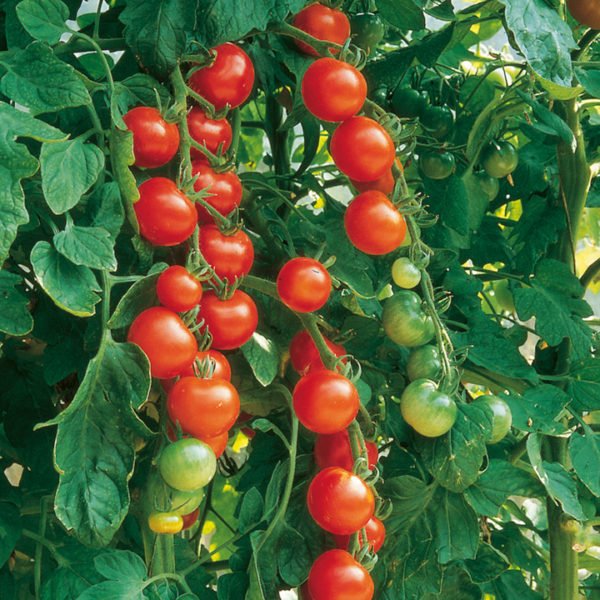
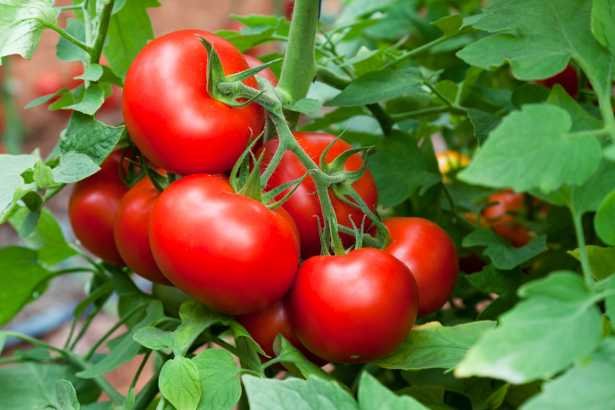
@ctrl-alt-nwo, That's most important letter you sharing. Everywhere can grow tomato plants. I've found some information from website article. I decided to share like that.
Tomatoes are sub tropical plants and therefore require a position in full sun. This is especially important in most areas of the UK and Ireland where sunlight and warmth are at a premium even in mid summer. A position against a wall or fence will give a better chance of success as long as they can receive sufficient water; avoid hedges as the soil will be too dry. Tomato plants also grow very well in raised beds, they appreciate the soil conditions which provide moisture without water logging.
Medium sized tomatoes of the size you are likely to see in the shops. Smooth, round tomatoes usually red or yellow skinned. They are good all purpose tomatoes. Large mediterranean style tomatoes excellent for sandwiches and salads. Be aware large tomatoes need a long season to ripen so not suitable for growing outside in cooler climates. Beefsteak are well worth growing if you have a polytunnel or greenhouse for their interesting and unusual variations and good flavor.
omatoes are one of the most rewarding crops for the home gardener to grow simply because their flavour is so much better than their shop bought cousins. Tomatoes grown for the supermarket shelf have been bred to travel well and look good on the shelves for as long as possible; tickling your taste buds is not their number one priority.
Many commercially produced tomatoes are also grown in soilless environments using an artificial fertilizer solution and are picked before they are ripe; both of these practices result in tomatoes that look nice but don’t taste great. Research has also shown that organic, homegrown tomatoes have a much more complex chemistry than commercially produced fruits. Not only does chemistry equal a greater depth of flavour, it is also likely that homegrown tomatoes are healthier with higher levels of the pigment ‘Lycopene’. Lycopene has been shown to help unclog blocked arteries and is thought to be one of the reasons the Mediterranean diet is so healthy.
Source: https://www.quickcrop.co.uk/learning/plant/tomato
A tomato is a solar powered sugar factory. For the first month or so, all of the sugar it produces is directed towards new leaf growth. During this stage, tomato plants grow very rapidly, doubling their size every 12 to 15 days. Eventually, the plants make more sugar than the single growing tip can use, which signals the plant to make new branches and to flower. This usually happens after 10 to 13 leaves have expanded, at which time the plant is 12 to 18 inches tall. In the next few weeks, the entire character of the tomato plant changes. If unsupported, the increasing weight of filling fruit and multiple side branches forces the plant to lie on the ground. Once the main stem is horizontal, there is an increased tendency to branch. Left to its own devices, a vigorous indeterminate tomato plant can easily cover a 4- by 4-foot area with as many as 10 stems, each 3 to 5 feet long. By season's end, it will be an unsightly, impenetrable, disease-wracked tangle.
Once flowering commences, all tomato vines must be tied to their supports. Although vigorous, the plants are also easily damaged, so take care in how you tie them and what you use. Cloth strips work well as long as they're not too old and threadbare. Pieces of panty hose cause the least damage to plants, but they're not biodegradable. Twine should be at least 1/8 inch thick, or else it can cut into the tomato stems.
With tomatoes, we want to maximize the efficiency of photosynthesis and minimize the risk of disease. This is best accomplished by ensuring that each leaf has plenty of room and is supported up off the ground. When a tomato plant lies on the ground, or when its growth is extremely dense, many of its leaves are forced into permanent shade, greatly reducing the amount of sugar they produce. If a leaf uses more sugar than it makes, eventually it will yellow and drop off. A pruned and staked plant will produce larger fruit two to three weeks earlier than a prostrate one.
Good information here !
Love the idea of growing tomatoes, but not sure where to start? Grab a pot and some cherry tomato seedlings. They're amazingly easy to grow, and even one plant will bear a steady crop of bite-size fruits all season.
There are a few varieties you can choose from when planting cherry tomatoes. A popular variety of cherry tomatoes is Sweet Million, which bear long clusters of sweet yet tomatoey red fruit; SunSugar, which produces super sweet, richly flavored golden fruit; and an heirloom called Black Cherry, whose tomatoes have a complex, rich, sweet flavor.
All three are what are called "indeterminate" varieties, meaning they will continue to grow taller and produce more until the plants are killed by frost, which—if they really like where they are means the plants may grow to six, eight, or even 10 feet tall. If you don't want to deal with that much plant, you can ask if your local organic garden center has any dwarf or patio varieties of cherry tomatoes for sale.
Red or yellow pear tomatoes are fun because of their shape, though their skins tend to be a little thicker than your average cherry tomato. You can also often find grape tomato plants, which bear very sweet oblong fruits similar to those sold in supermarkets.
A very important vegetable plant you discuss today.
Tomatoes are one of the most rewarding crops for the home gardener to grow simply because their flavour is so much better than their shop bought cousins. Tomatoes grown for the supermarket shelf have been bred to travel well and look good on the shelves for as long as possible; tickling your taste buds is not their number one priority.
Many commercially produced tomatoes are also grown in soilless environments using an artificial fertilizer solution and are picked before they are ripe; both of these practices result in tomatoes that look nice but don’t taste great. Research has also shown that organic, homegrown tomatoes have a much more complex chemistry than commercially produced fruits. Not only does chemistry equal a greater depth of flavour, it is also likely that homegrown tomatoes are healthier with higher levels of the pigment ‘Lycopene’. Lycopene has been shown to help unclog blocked arteries and is thought to be one of the reasons the Mediterranean diet is so healthy.
Tomato white wonderThe other big bonus with growing your own tomatoes is the amazing variety of size, shape, colour and flavour there is available. A bit like the potato (they are, of course, close relations) there are a huge range of different types for very large ‘beefsteak’ varieties to small and sweet ‘cherry’ fruits. They are fun to grow and give such a great reward that they have to be one of stars of the home vegetable plot
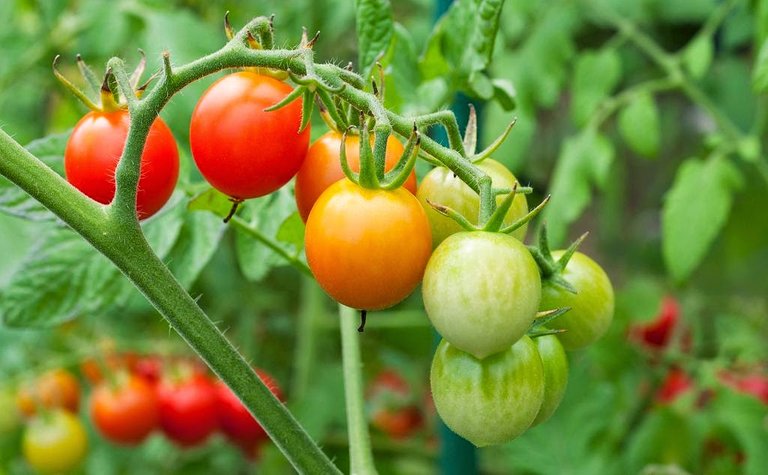
Source all
Thanks for the information of Homegrown Tomatoes. the word wide garden.your great garden experience and great work.
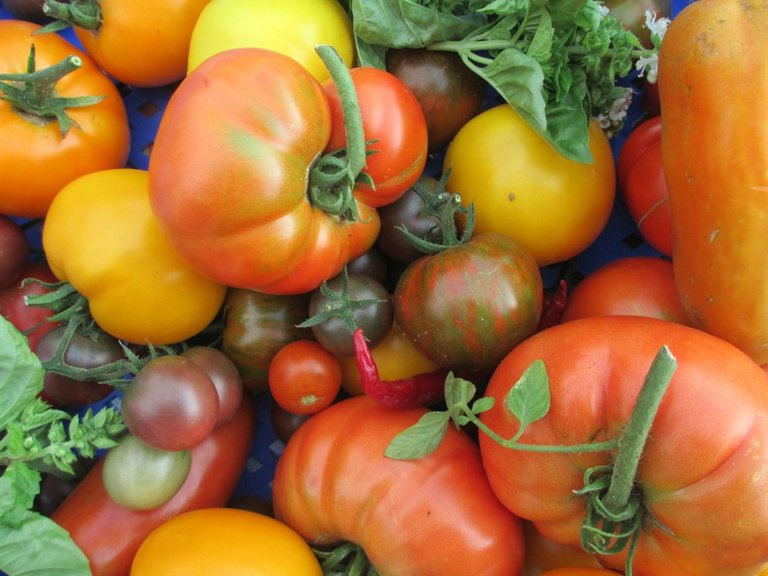
@ctrl-alt-nwo
100% like and resteem
Tomato; It is a herbaceous, one-year-old vegetable plant of the Oceans class, the Eggplant family. It is known for the first time in South America. After the discovery of America, Spain, Portugal, Italy spread to the world. He likes warm and warm humid climates. Mediterranean and tropical countries can be cultivated all year. It grows everywhere except the high places in Turkey. It is 50-200 cm long with a very branched, feathered body, the leaves are green with feathers. Body and leaves are specially fragrant. In the case of flowers, yellow, clusters, flowers are covered with leaves and sex organs. Fruit is meat (flat, round, oval and sliced) raw while green, maturity red, purplish or yellow. The seeds are buried in the fruit. The root is the fringed side root. The fruit contains protein, carbohydrate, calcium, beta carotene, vitamins B, C and K, minerals. Tomato plants have 12 species that naturally grow.
With no commercial significance than tomatoes in Turkey, commercially grown species of indeterminate tomato with indeterminate tomatoes produced bifsteyk culture, bonnibest, varieties grown as Ponderoza. Tree tomato grows in tropical America. This tree, 3-4 m long, is sweet and slightly bitter, like tomatoes, eaten fresh and preserved. Balkan tomatoes and Baltimore tomatoes are also widely known species. Production is done with seed, the fidelity obtained is surprising when it has two leaves. Then the garden, fields and greenhouses are planted. It is attached to poles in all sizes, all kinds (sandy soil, heavy soil) are grown in the soil. He likes fertile land. In recent years, tomato greenhouse is given importance.
What should be considered when growing tomatoes?
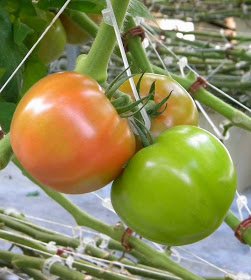
1.Slightly till the soil warms to prevent the growth of weeds, then lay the mulch so that the weeds are dead and the soil is kept.
2.It is better to water the tomatoes in small quantities a few times, and once in the depths.
3.Avoid wetting the leaves because wet leaves are more likely to catch disease.
4.Coating the plant around with the fertilizer 2-3 times during the growing season will increase the growth and health of the vegetable.
5.If you connect the grains to the grate, you may need to prune to get higher yield. Pruned tomatoes take up less space and produce 2 weeks earlier than non-pruned ones.
6.Tomato pruning is different from tree and shrub budamount. You just have to do it with your fingers. You should take absorbents that are derived from the main or lateral stems of the leaves and in the form of small shoots.
7.If you live in a warm place, leave some absorbents on top and in the middle to protect the tomatoes from scalding. When boiled, they form light gray spots on the tomato, which causes the disease.
8.Once the tomatoes reach the top of the rim, you can cut off their tips to give them more flowers and fruit.
9.If you grow tomatoes in pots, you need too much sun, plenty of water and fertile soil.
How should the tomato be collected?
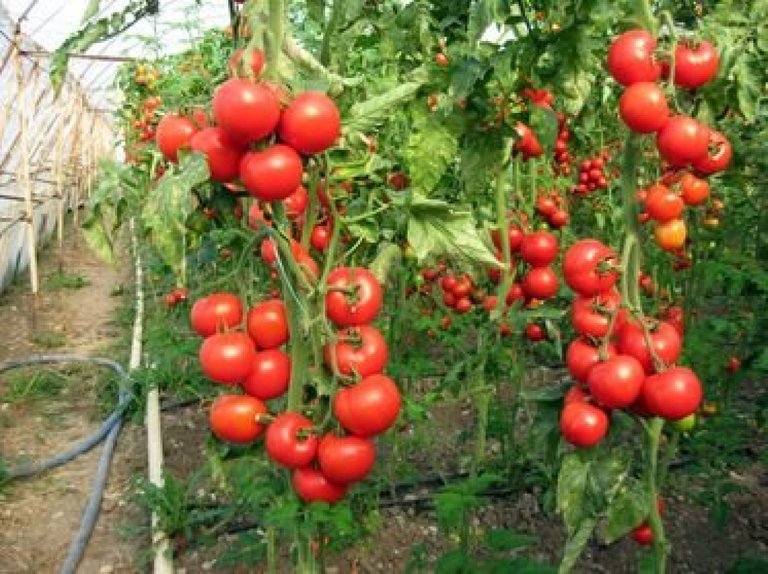
1.If the tomatoes are ripe, begin to check the sprouts every day for the best when they are the best. Gently bend or cut the tomato you decide to sum up, supporting the sprouts to avoid damage.
2.Mature tomatoes can be stored in the refrigerator for several weeks, but their taste decreases over time.
3.Green tomatoes mature when kept in a warm place without exposure to direct sunlight. Wrap it in the newspaper to slowly ripen it. Put it in a dark, cool place. Check frequently to be sure they are decayed.
4.To continue to obtain fresh tomatoes, cut off a few healthy sprouts and plant. Then take a big pot. Place warm and sunny place one time. If you care, you get fresh tomatoes for winter.
Another wonderful and interesting garderning post by @ctrl-alt-nwo sir...
.jpeg)
Tomatoes are available in a huge range of sizes and colors. To narrow down the choices, figure out where you are going to grow the plants.
Some like them red, some like them yellow, orange or even purple. Some prefer tomatoes as tiny as a dime and some want them as big as a melon. Some like them juicy, some like them dense and pulpy. Fortunately, there are mroe than 700 different tomato varieties in cultivation today. Plenty of choices for everyone.
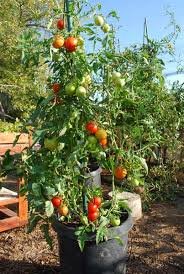.jpeg)
If you're trying to decide which tomato varieties to grow, here's what I think about:
I think Disease resistance is important, because tomatoes are vulnerable to a number of diseases that can weaken the plant and reduce yields. Look at the seed packet or plant label to see if the variety has resistance to verticillium and fusarium wilt, two very common soil-borne diseases that affect tomatoes. Resistance to these diseases is designated by a V or F after the variety name. If tomatoes in your region suffer from root-knot nematode (N), Tobacco Mosaic virus (T) or Alternaria (A), look for resistance to these diseases as well. Late blight is a problem in many areas, so choose a variety that's resistant...
Wel done and perfect work sir...
Cheers~~
@ctrl-alt-nwo,
Once I tried to plant Tomatoes in my home garden but it didn't work well! I think climate was the reason for that! Anyway you made it and that would be a great work!
Cheers~
@ctrl-alt-nwo sir...
.jpeg)
Actually I think Not only do you save money by growing tomatoes at home, but you also get the reward of plucking perfectly ripe fruits from the vine. Unlike their supermarket counterparts, vine-ripened tomatoes have sweet, juicy flesh that contributes unmistakable depth of flavor to any salad, pasta, or BLT. With a few tips for planting tomato seedlings, you'll be on your way to a tomato bonanza...
Find a sunny spot. Tomato plants thrive in six to eight hours of daily sunshine. Containers can be moved throughout the growing season and are a great choice for home growers who have limited garden space. Be sure to provide enough room for each plant's growth. One tiny seedling can reach an astonishing height of ten feet and will need at least two cubic feet of soil.
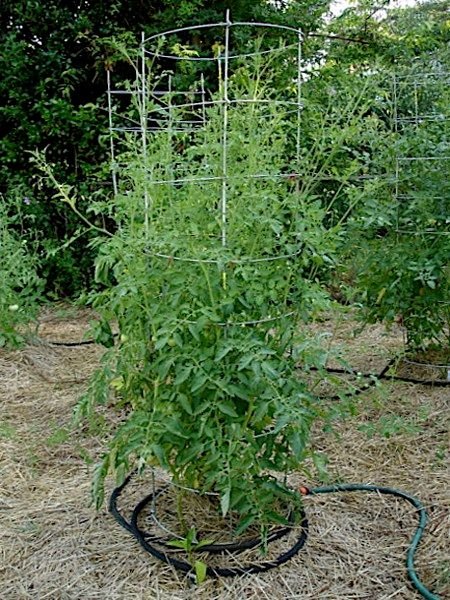
Consider climate, size, and cooking use. Each cultivated variety (cultivar) offers a unique set of characteristics. Meaty tomatoes with few seeds, like San Marzano and Amish Paste, are ideal for sauce making. Short and stocky cultivars adapt well to containers, as do types that produce smaller fruits. All heirloom cultivars are open pollinated, meaning that year after year their seeds can be saved and will grow into identical plants. Like a precious piece of grandmother's jewelry, heirloom seeds are often passed down from one generation to the next. Hybrids, on the other hand, are combinations of two or more different tomato plants, bred together for traits such as disease resistance or uniform shape.
Plant young seedlings deeply in nutrient-rich soil. Fill containers with equal parts planting mix and potting soil. Combined together, the two provide an aerated, medium density environment for roots to expand and access nutrients. Dig a hole deep enough to cover all but the top three to four inches of the seedling. It's okay to bury the lowest leaves. Those fuzzy white hairs on the stem will form a sturdy adventitious root system.
.jpeg)
Water only as needed. A simple way to tell if your plant needs water is to stick your fingers into the soil. It should feel damp several inches below the surface, but "tomatoes like to have dry feet," says Allison Melanson, who works for Tomatomania, a community of enthusiastic tomato lovers that organizes tomato seedling sales in California, Maryland, and Virginia. "Imagine if you had to wear soggy socks for days at a time!" she explains. Her recommendation is to soak the roots once every three days, and then to water less often as the plant begins to form green tomatoes.
Provide support as the plant grows. In the wild, tomato plants ramble along the ground but when cultivated vertically in home gardens, they require physical support from stakes, trellises, or cages. Generally, they also need nutritional support in the form of fertilizer. Melanson and other experienced home gardeners prefer organic fertilizer to synthetic fertilizer, which she describes as the botanical equivalent to a candy bar. "Synthetics offer a big burst but then lead to a sugar crash," she says. Apply organic fertilizer every two weeks to tomato plants growing in containers, and less often to plants growing directly in the ground. Crushed eggshells both fertilize the soil and deter soft-bellied pests from feasting on your tomatoes.
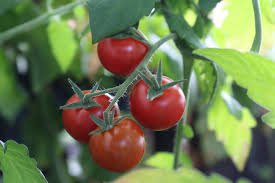.jpeg)
Enjoy the harvest. After transplanting a seedling into a larger growing space--a patio container, an expansive garden, or something in between--pinch off the first yellow flowers that it produces. By pruning away this early production, you will encourage the plant to grow taller and wider before it produces fruit, ultimately leading to a more bountiful harvest. Pick the fruits when they give slightly and eat them as soon as possible. Some heirloom tomatoes have such high levels of natural sugar that they will burst on your kitchen countertop if ignored for too long. In the case of irresistible homegrown tomatoes, that shouldn't be a problem!
Happy garderning....take fresh foods...enjoy your life...
Thanks...
So as to develop great tomatoes that are free from malady, have a decent full delicious body and are abundant on the vine there are 3 scratch angles you have to deal with to get the best from your plants. It includes a little thinking ahead and anticipating your part however the outcomes will try. So precisely what do tomatoes need to develop?
To start with, as is commonly said about land, its area, area, area, tomato plants are genuine sun admirers and should be in the sun for no less than 6 hours daily keeping in mind the end goal to give a lot of organic product on the vine.
Second, they have to get the right supplements to prosper and the place they get them from is the dirt aided along by the right watering program. On the off chance that you are planting the tomatoes in the garden it is fundamental that the ground is appropriately arranged for planting with a lot of manure and additionally compost delved into the dirt to help development. Once planted they ought to be returned to reasonably as often as possible with some kind of nourish and I would suggest this is done at any rate once every week, particularly on the off chance that you see that your plants are hailing a bit. You can either buy authority tomato bolster (bear in mind to allude to their directions) or you can utilize your left finished ground espresso and place this around the base of the plants. Do this and before you know it you will have heaps of dazzling crisp tasting tomatoes.
Try not to think little of exactly how parched your tomato plants are, the point at which I specified the right watering program, this implies never enabling your plants to dry out, particularly critical on the off chance that they are in pots or a develop sack and furthermore make an effort not to stun them with icy water. In the event that you can, store cans of water alongside the plants so the water achieves encompassing temperature then when you have to, move the water into a watering can with a rose fitted so the water can be sprinkled on tenderly. In a perfect world you will water like this a few times per day, recalling that tomatoes likewise don't prefer to be in completely immersed soil.
In the event that that all sounds a bit work escalated, you could introduce a trickle sustain watering framework, there are extraordinary frameworks you can buy for this assignment or you could make up your own framework. One route is to cover plastic water bottles between the plants that have been punctured around the boundary and through the bottoms, the tops are left over the level of the dirt with the goal that they can be re-filled. Its a harsh and prepared however extremely powerful method for guaranteeing the dirt doesn't dry out, as long as you make sure to top the contains obviously. Likewise recollect that when you do water there must be sufficient for a decent profound drench, too little and you will urge your underlying foundations to the surface.
Third is the best possible help of the plant, they should be off the ground and uncertain. Leaving shoots running over the ground will abandon them open to contagious assault and malady. Many individuals take care to prune their plants, evacuating any development beneath the blooming fronds. Ensure that you utilize either a reasonable and sufficiently solid stake or you can utilize tomato confine whichever is your inclination and do it while the plants are as yet youthful with the goal that the roots are not bothered at a later time.
This is the most ideal approach to develop tomatoes that I know, clearly there are some presence of mind moves you have to make also to keep up your plants in a sound condition, for example, expelling dead or dried out leaves and disposing of bugs, yet basically focus on these 3 key angles and you will be well while in transit to a lot of delicious new tomatoes.
Wow !! Gardening is one person passion ..A tomato is a nutrient-dense superfood that offers benefit to a range of bodily systems. Its nutritional content supports healthful skin, weight loss, and heart health.
I have an tomato garden ... In my garden i Cultivate many types of tomato ...Here some of simple
I am collecting some data from internet those are contain tomato.. Here it is
Dear @ctrl-alt-nwo I agree with you....
Beefsteak (heirloom) tomatoes are delicious, flavorful, meaty fruits have smooth shoulders, not as rough and ridgy as Beefsteak and the blossom end scars are smaller.
Delicious, flavorful, meaty fruits. Luscious red fruits averaging 17 oz. Prefers full sun (6+ hours) and well-drained soils. Grows to be 6-8 feet tall. Fruit size is large and will weigh about 1 pound Plant 2-3 feet apart with 3-4 feet between rows.All three varieties of homegrown tomatoes are perfect combination with salad. Our family’s favorite classic cucumber and tomato salad just got better with the addition of avocado, a light and flavorful lemon dressing and the freshness of cilantro. Easy, excellent avocado salad.
The best time for when to plant tomatoes in the UK is around the end of May unless you want to grow from seed. No chance of growing from seed at this time of year because you would have to add a further 4 to 6 weeks onto the schedule and you just haven’t got enough time left to do that.
So if you haven’t already cultivated your tomato plants from seed so they are ready for the end of May, you will have to go and buy some tomato plants and quickly. Because they need to be in the ground, a growbag or a 12″ plant pot no later than the 1st week in June.

It is the span of the tomatoes that basically directs to what extent they take to develop, cherry tomatoes for the most part opening into the early season assortment, fair size, for example, plum tomatoes have a tendency to go in the mid season gathering and bigger tomatoes like beefsteak fit in the late season gathering. It's a smart thought to have plants from the diverse assortments to guarantee that you have tomatoes developing all through the entire season.
Considering when you are probably going to see the last ice of the winter, you can really stun when you get your plants into their last spot to additionally expand the season. Reasonably you are likely just going to have the capacity to take one more month in light of the fact that even after April has gone there is still somewhat of a possibility of a late ice.
We really observed snow this year in the South of France amid the principal seven day stretch of May, somewhat of a catastrophe from the tomato developing point of view, particularly on the off chance that you are planting straight into the ground. So as it's been said in Yorkshire, 'ner cast a clout till May is out' which implies don't expel any garments until May is (out significance arrived) so actually you need May to have touched base before you can consider the cool climate has totally wrapped up. this year being an exemption to that govern; such a great amount for an unnatural weather change.
So in outline an opportunity to plant tomatoes in the UK is amid the long stretch of May, however taking consideration not to be gotten by a late ice toward the start of May. Seeds should be developed around a month to a month and a half before that, contingent upon assortment which puts you at the center of to the finish of March. In the UK that may mean you have to begin your seeds inside or in a warmed nursery to get the perfect germination temperature of 16C (61F), yet ideally by then you will be OK.
Obviously in the event that you have the offices accessible, for example, a warmed nursery, you can begin seeds significantly prior maybe around the finish of January, yet you should have the capacity to shield the consequent plants from ice as they are probably going to be prepared toward the start or center of March. They will likewise require some sensible times of sun, preferably no less than 6 to 7 hours per day, not generally simple to drop by amid March, but rather still doable in spite of the fact that they might be somewhat slower developing.

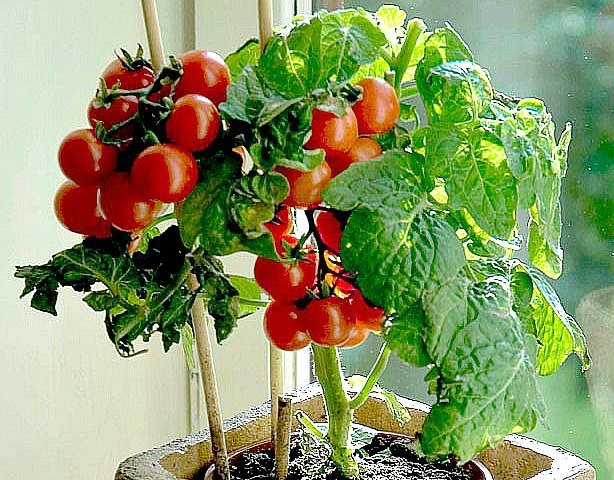
wow tomatoes look so good ....i would like to one i love tomato with salt and papper its nice to put in salad... delicious in any country tomatoes rock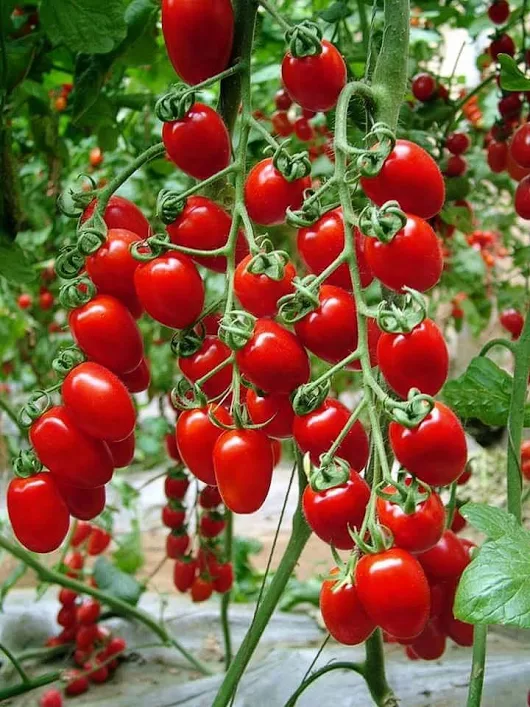.png)
Yes...agree with you @ctrl-alt-nwo sir..
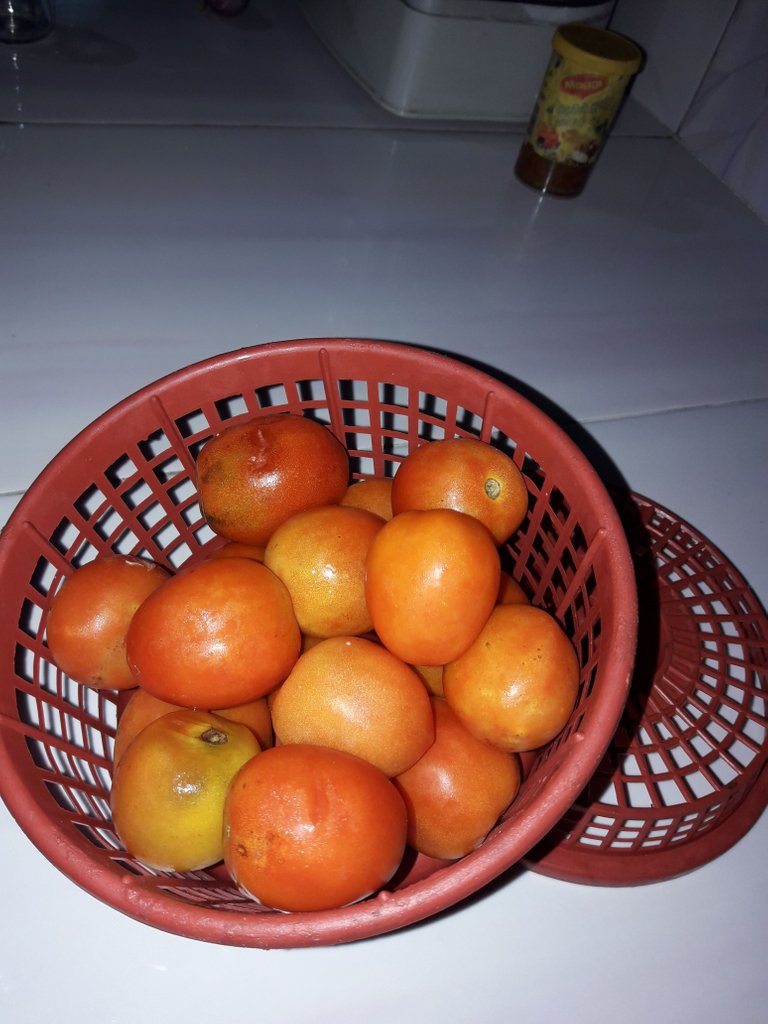
Tomatoes is best plant in my home garden...and Homegrown Tomatoes are the best...
This is my tomatoes from my garden...
How exactly, do tomatoes help you? Let’s look at the numerous health benefits of eating them and find out:
Low in fat and calories: At just 18 calories per 100 grams, they are low in calories as well as fat, with zero cholesterol. Which makes them great for your waistline and your heart.
Heart healthy: 0 cholesterol, plus high levels of potassium, niacin, folate and fiber make tomatoes great for your heart. Fiber is known to lower cholesterol and tomatoes have 9% of the recommended daily dose.
Fight cancer: Lycopene, which is an anti-oxidant, can help fight different types of cancers and slows the growth of cancerous cells. Numerous studies show that eating tomatoes daily can reduce your risk for stomach, prostate and colorectal cancer.
Good for your eyes: Besides beta carotene and lycopene, which are both good for your vision, tomatoes also contain lutein. Combined, these 3 elements protect your eyes from light-induced damage, which is a leading cause of cataracts, and macular degeneration brought on by age.
Improve bone density: Believe it or not, when it comes to building strong bones, tomatoes are just as effective as milk. Tomatoes are rich in Vitamin K, which has been proven to activate osteocalcin; osteocalcin anchors calcium deep within bone, making them stronger and less prone to becoming brittle with age.
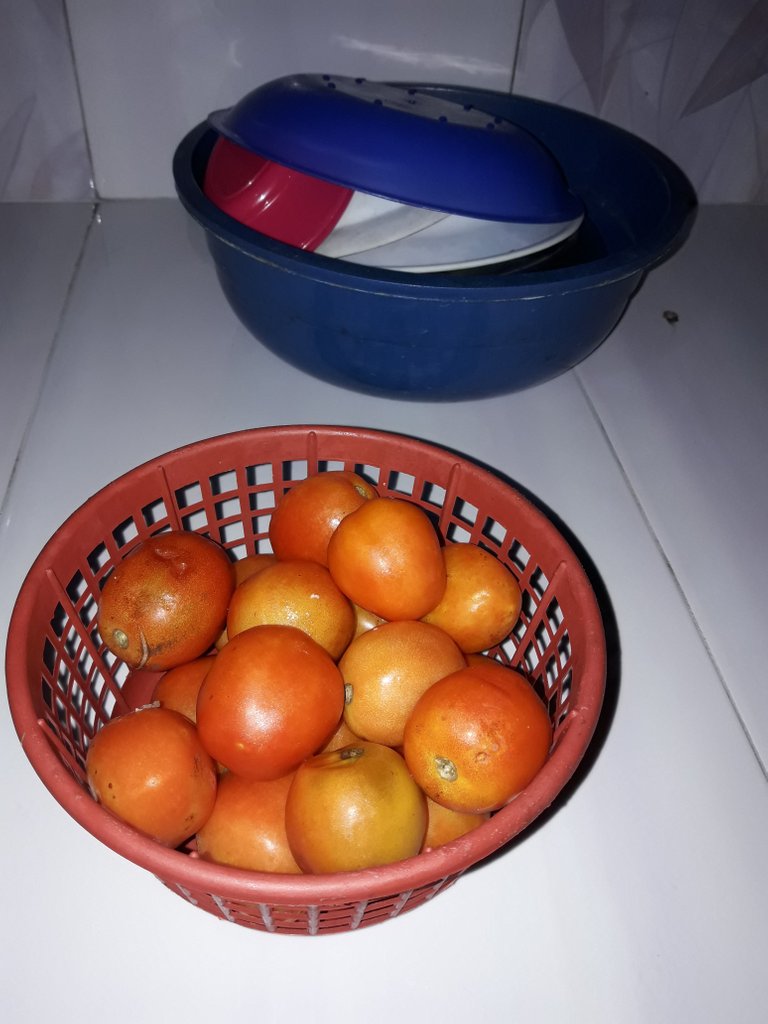
So you may want to pour a glass of tomato juice instead of milk for breakfast- just not with your cereal (unless that’s your thing).
Hey! They are so ripe and you have a lot of them :D
Have a look at mine. I don't have enough space to grow much of them as I am living in a rented house.
They look like they will be nice too.
We also have been lately growing the tomatoes but yours seem to be pure green plants .you seem to be more than interested in planting things.so am i .i love gardening stuff
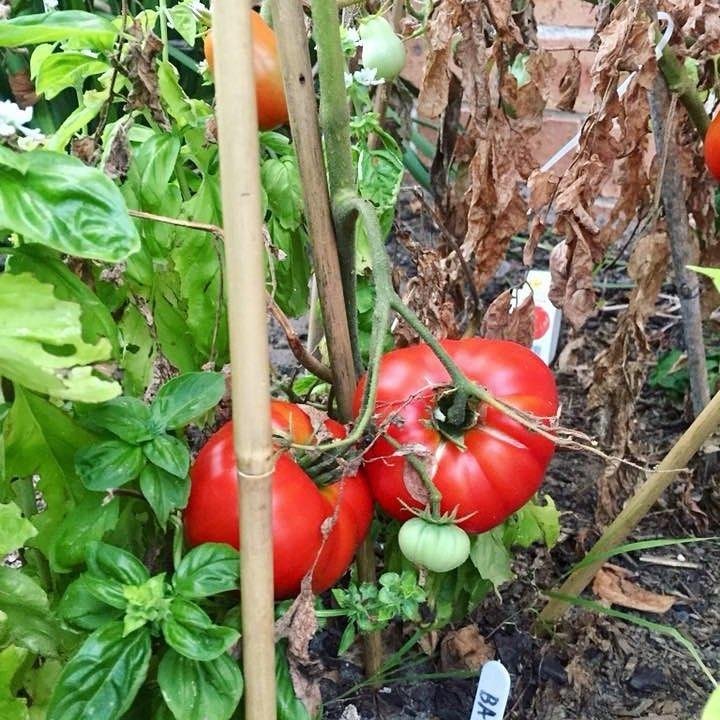
Kuta apuz